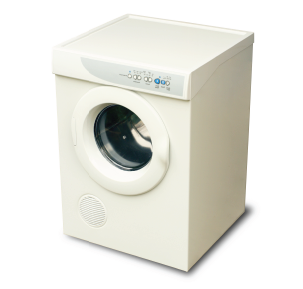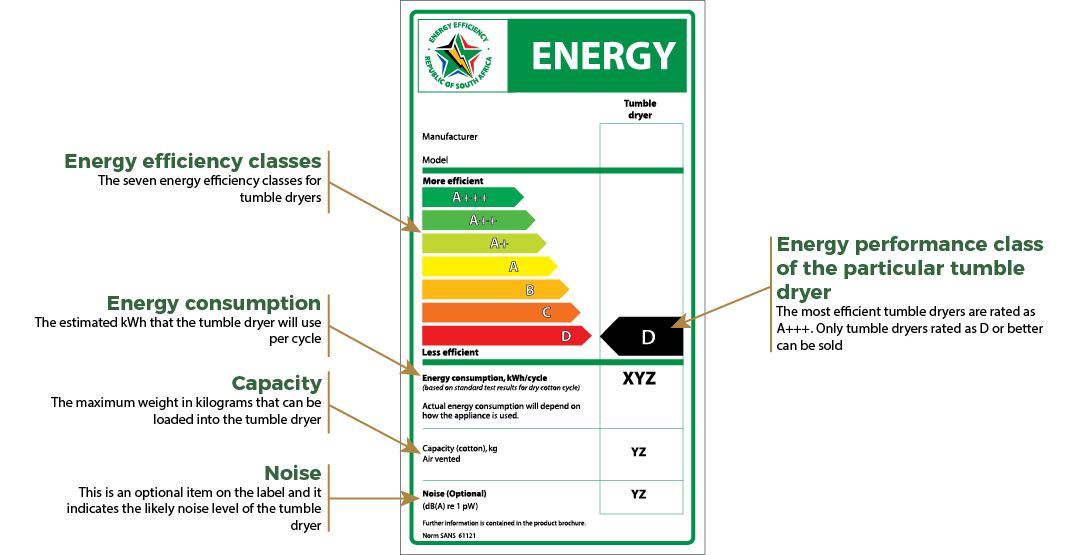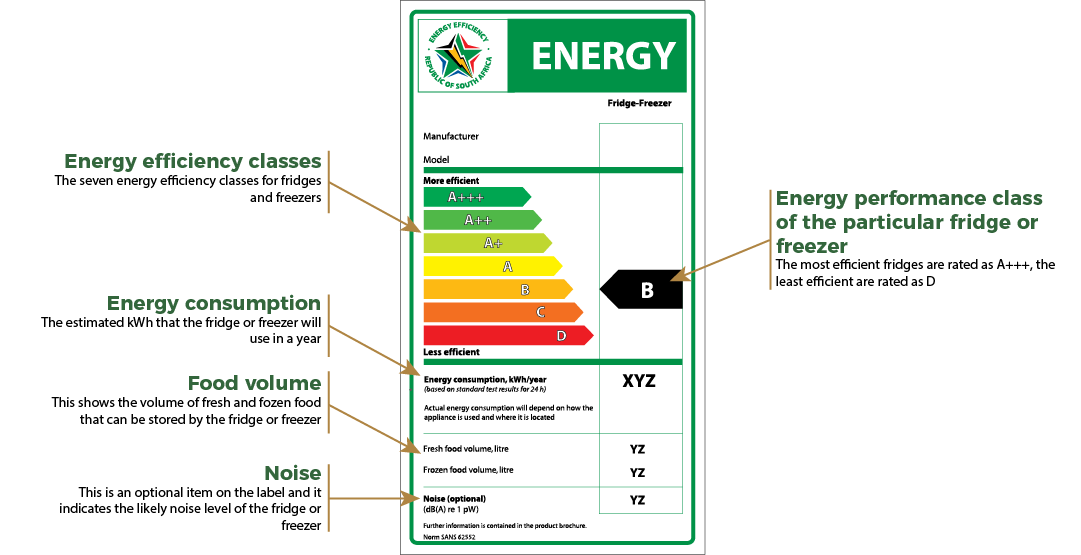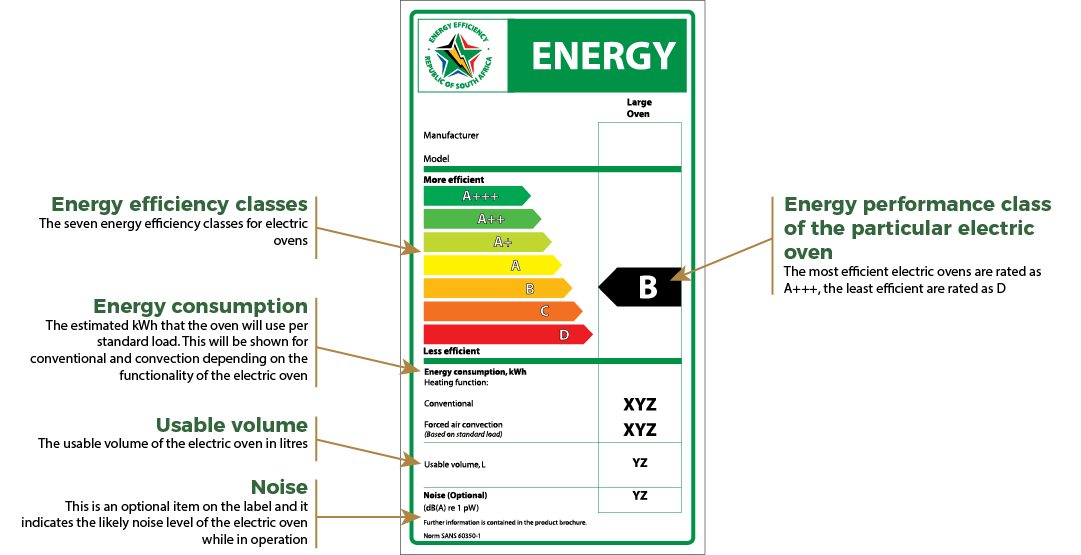Tumble Dryers
Tumble dryers are very energy intensive appliances since significant amounts of energy are required to heat clothes in order to dry them. As a result, tumble dryers can be one of the major users of energy in households and consumers should carefully consider the energy use of a tumble dryer before making a decision to purchase, as the lifetime cost of using a tumble dryer is often very high.
To protect consumers from purchasing inefficient tumble dryers, Minimum Energy Performance Standards (MEPS) have been set for tumble dryers. Currently, only tumble dryers with an Energy Efficiency Rating of Class D or better can be sold.
A key consideration for consumers considering buying a tumble dryer is the annual cost of running a tumble dryer. The calculations below highlight that the annual cost of using a tumble dryer can be high and consumers may want to consider investing in alternatives such as indoor washing lines and clothes horses.

Understanding the energy efficiency label
Tumble dryers being sold must be labelled with a South African Energy Efficiency Label to help consumers understand the relative energy efficiency of different tumble dryers. The image below shows a sample of a label for a tumble dryer with an explanation of the key elements of the label.

Calculating how much the appliance will cost to run
To calculate the annual running costs of a tumble dryer, multiply the kWh figure given on the label by the number of times you are likely to use the dryer in a single week. Next, multiply by 52 weeks. Finally, multiply by the cost of electricity in your municipality. You can find the kWh cost of electricity in your municipality by looking at your electricity bill.
For example, if the label indicates that the tumble dryer will use 3.15 kWh per cycle and where you live a kWh of electricity costs R2 (including VAT), the cost of running the tumble dryer that you use for 6 cycles a week will be R1965.60 for the year.
Appliance Energy Calculation Tools were created to aid consumers to make more informed decisions by calculating the long term cost for running an appliance. Click here to calculate the running costs and CO2 emissions for tumble dryers.
{Energy Consumption Per Cycle}
x {Number of cycles per week}
x {Number of weeks in a year}
x {Cost of Electricity in your municipality}
= Annual running cost of the appliance
3.15 kWh x 6 cycles per week x 52 weeks per year x R2 per kWh = R1965.60
Tips for using your appliance most efficiently
 Remove excess water
Remove excess water
Placing clothes that are dripping with water in a tumble dryer, reduces the efficiency of your dryer. Ensure that excess water is removed before placing clothes in the dryer.
 Air dry clothes
Air dry clothes
A tumble dryer is one of the largest consumers of energy in your household. Dry your clothes on the washing line and only use the tumble dryer when necessary.
 Clean the lint filters
Clean the lint filters
Clean the filters in the dryer regularly, which will maximise the efficiency of the dryer by ensuring that hot air circulates freely.
 Dry a full load
Dry a full load
Drying a small load consumes as much energy as a full load. Save energy by only drying full loads.
 Don’t overload the dryer
Don’t overload the dryer
Overloading the tumble dryer will reduce the efficiency of your dryer and cause unnecessary wear and tear. Ensure that only the right quantity of laundry is placed in the dryer.
 Remove clothes when dry
Remove clothes when dry
Remove clothes from the dryer as soon as they are dry. Machines will carry on rotating even when clothes are dry and consume more energy.
 Untangle washing before drying
Untangle washing before drying
Untangle all your clothes before putting them in the dryer. Tangled and knotted items take longer to dry.










